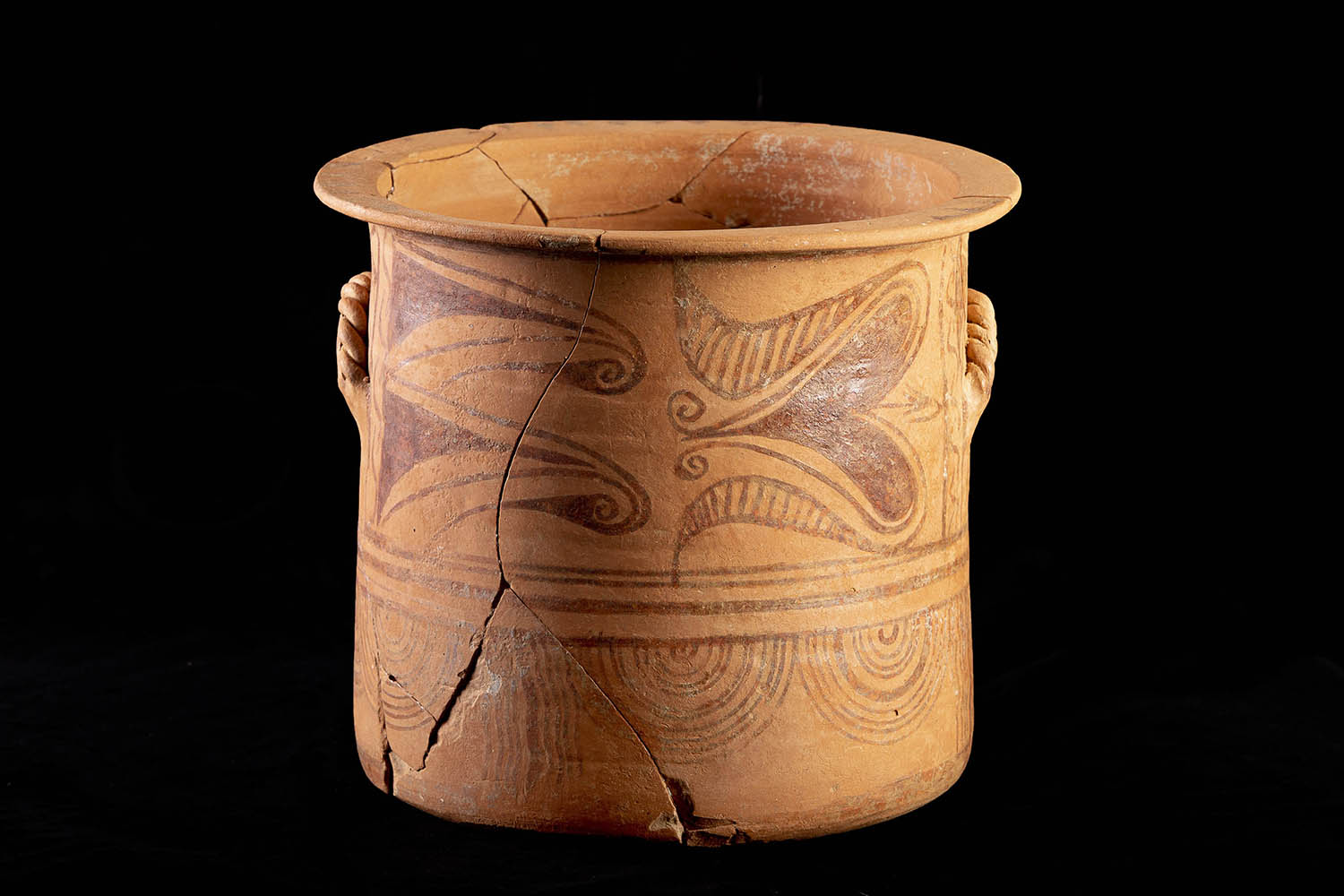
Pottery
3rd-2nd c. BC
Mas Castellar (Pontós - Alt Empordà)
This object, known as a calathus or “top hat” due to its shape when turned upside down, was found in a pit or a silo (SJ101) at the Iberian archaeological site of Mas Castellar de Pontós (Alt Empordà). It is dated to approximately 200 BC.
The calathus is a locally made pottery vessel with a cylindrical or frustoconical shape and a horizontal rim that imitates an original Greek form and presents a wide diversity of profiles and decorations. Its production and distribution began in the 3rd century BC, but it did not become widespread until the 2nd century and the first half of the 1st century BC, during the late Iberian or Ibero-Roman period, when this type of vessel is found at a large number of sites in the western Mediterranean. This fact has led researchers to propose that it would have been used to contain a product made in the Iberian area, probably honey, which would have been distributed widely by Roman maritime and/or fluvial trade networks. This hypothesis does not rule out other uses that can be linked to certain ritual or worship practices, as can be deduced, for example, from the finds of these vessels in sanctuary caves and some necropolises, in the latter case used as funeral urns.
They come in various shapes and sizes, ranging from small specimens, practically miniatures, to those measuring more than 30 cm in height and with a maximum rim diameter. In technical terms, they were wheel-thrown, fired in a kiln with an oxidizing atmosphere and, for the most part, decorated with reddish pigments, which is why they fall into the category of painted Iberian ware. The decorative motifs were diverse, ranging from geometric patterns to animalistic and/or anthropomorphic motifs, depending on where they were made.
The example found at the Iberian establishment of Mas Castellar de Pontós is large (28 cm tall with a maximum diameter of 27 cm), decorated with wine-coloured paint and believed to have been made in the Fontscaldes workshop (Valls, Alt Camp). It has two forked and intertwined appliqué handles that are not functional as they do not protrude enough to be able to hold the piece with. Therefore they are purely decorative and in turn frame an area with a starred motif bordered on the sides by vertical wavy lines. The rest of the outer wall of the piece is decorated with two friezes separated from each other by a series of horizontal lines. The upper frieze, which occupies almost two thirds of the surface, is decorated with large ivy leaves and other plant and geometric motifs. The lower frieze, on the other hand, is decorated with concentric semicircles of different thicknesses interspersed with vertical wavy lines. Finally, the edge is decorated with a series of joined triangles (known as wolf’s teeth), which have only been partially preserved.
The fact that the piece was found in a pit or silo and interpreted as a probable votive deposit reinforces the previously expressed idea of the use of the calathus in certain ritual practices, both for its content and in its own right.
Gabriel de Prado
